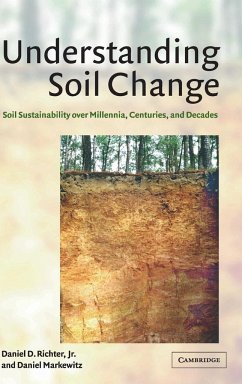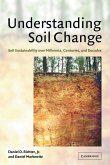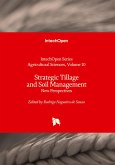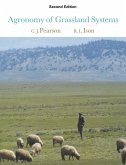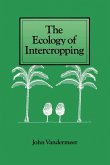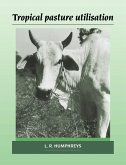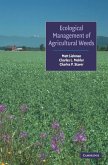Across the world, soils are managed with an intensity and at a geographic scale never before attempted, yet we know remarkably little about how and why managed soils change through time. Understanding Soil Change explores a legacy of soil change in southeastern North America, a region of global ecologic, agricultural, and forestry significance: from the acidic soils of primary hardwood forests that covered the region until about 1800, through the marked transformations affected by long-cultivated cotton, to contemporary soils of rapidly growing and intensively managed pine forests. These well documented records significantly enrich the science of ecology and pedology, and provide valuable lessons for land management throughout the world. The book calls for the establishment of a global network of soil-ecosystem studies, like the invaluable Calhoun study on which the book is based, to provide further information on sustainable land management, vital as human demands on soil continue to increase.
Table of contents:
Preface; Acknowledgements; Foreword; Part I. Soil and Sustainability: 1. Concerns about soil in the modern world; 2. Managing soils for productivity and environmental quality; 3. Biogeochemical sciences in support of soil management; 4. The science of estimating soil change; 5. Soil change over millennia, centuries, and decades; 6. The Calhoun forest: a window to understanding soil change; Part II. Soil Change over Time Scales of Millennia: 6. Long-term pedogenesis; 7. Soil development from the Devonian to Mendocino and Hawaii; 8. Genesis of advanced weathering-stage soils at Calhoun ecosystems; 9. The Calhoun soil profile; 10. The forest's biogeochemical attack on soil minerals; Part III. Soil Change over Time Scales of Centuries: Conversion of Primary Forest to Agricultural Fields: 11. Agricultural beginnings: Native American cultivation; 12. Soil biogeochemistry in cotton fields of the Old South; 13. Agricultural legacies in old-field soils; Part IV. Soil Change over Time Scales of Decades: Conversion of Agricultural Fields to Secondary Forests: 14. The birth of a New Forest; 15. Accumulation and rapid turnover of soil carbon in a re-establishing forest; 16. Satisfying a forest's four-decade nitrogen requirement; 17. Soil's re-acidification and circulation of nutrient cations; 18. Changes in soil phosphorus fractions in a re-establishing forest; Part V. Soil Change and the Future: 19. The case for soil-ecosystem experiments; Epilogue; Recommended readings; Appendix I. Carbonic acid weathering reactions 248; Appendix II. Simulations of bomb-produced 14C in forest floor; Appendix III. Generalized ANOVA for the Calhoun experiment; Appendix IV. Total chemical elements in Calhoun soil profiles; References; Index.
Using data from the long-term Calhoun Forest Experiment, this book explores a legacy of soil change in a region of ecological, agricultural, and forestry significance. The resulting synthesis provides lessons for land management throughout the world and illustrates the need for a global network of similar soil-ecosystem study sites.
An important synthesis of a long-term study in the US which provides lessons for land management throughout the world.
Hinweis: Dieser Artikel kann nur an eine deutsche Lieferadresse ausgeliefert werden.
Table of contents:
Preface; Acknowledgements; Foreword; Part I. Soil and Sustainability: 1. Concerns about soil in the modern world; 2. Managing soils for productivity and environmental quality; 3. Biogeochemical sciences in support of soil management; 4. The science of estimating soil change; 5. Soil change over millennia, centuries, and decades; 6. The Calhoun forest: a window to understanding soil change; Part II. Soil Change over Time Scales of Millennia: 6. Long-term pedogenesis; 7. Soil development from the Devonian to Mendocino and Hawaii; 8. Genesis of advanced weathering-stage soils at Calhoun ecosystems; 9. The Calhoun soil profile; 10. The forest's biogeochemical attack on soil minerals; Part III. Soil Change over Time Scales of Centuries: Conversion of Primary Forest to Agricultural Fields: 11. Agricultural beginnings: Native American cultivation; 12. Soil biogeochemistry in cotton fields of the Old South; 13. Agricultural legacies in old-field soils; Part IV. Soil Change over Time Scales of Decades: Conversion of Agricultural Fields to Secondary Forests: 14. The birth of a New Forest; 15. Accumulation and rapid turnover of soil carbon in a re-establishing forest; 16. Satisfying a forest's four-decade nitrogen requirement; 17. Soil's re-acidification and circulation of nutrient cations; 18. Changes in soil phosphorus fractions in a re-establishing forest; Part V. Soil Change and the Future: 19. The case for soil-ecosystem experiments; Epilogue; Recommended readings; Appendix I. Carbonic acid weathering reactions 248; Appendix II. Simulations of bomb-produced 14C in forest floor; Appendix III. Generalized ANOVA for the Calhoun experiment; Appendix IV. Total chemical elements in Calhoun soil profiles; References; Index.
Using data from the long-term Calhoun Forest Experiment, this book explores a legacy of soil change in a region of ecological, agricultural, and forestry significance. The resulting synthesis provides lessons for land management throughout the world and illustrates the need for a global network of similar soil-ecosystem study sites.
An important synthesis of a long-term study in the US which provides lessons for land management throughout the world.
Hinweis: Dieser Artikel kann nur an eine deutsche Lieferadresse ausgeliefert werden.

